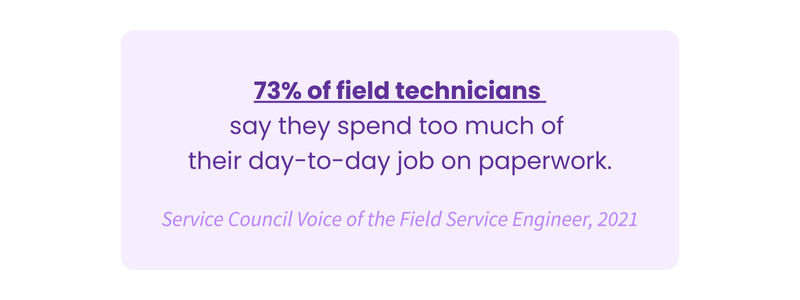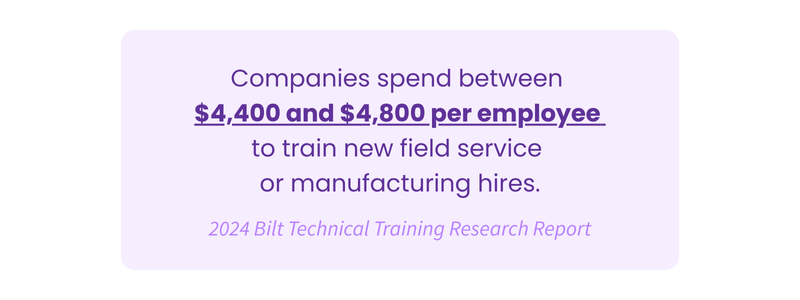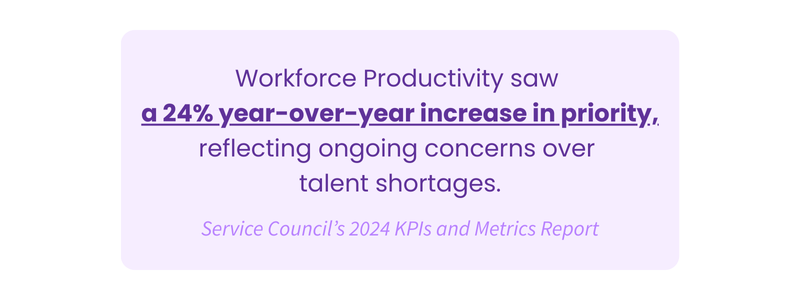In the fast-evolving world of field service, staying ahead means making decisions based on more than just instinct — it means relying on data.
From shifting customer expectations to the rise of remote support and AI, the field service landscape is undergoing major transformation. To help you keep pace, we’ve compiled 52 essential statistics that reveal where the industry is today — and where it’s headed.
Whether you’re a service leader looking to benchmark performance, a technician navigating digital tools, or a strategist planning for the future, these insights will give you the clarity you need to adapt, optimize, and lead with confidence.
Let’s dive into the numbers driving today’s top-performing service organizations.
What are the biggest challenges facing field service organizations?
- Struggle to meet customer SLAs – 46%
- Lack of skilled workers – 40%
- Change management / user adoption of new tech – 37%
- Outdated / insufficient service technologies – 37%
(Source: IFS State of Service 2023)
Workforce trends & challenges
- Only 42% of field service technicians say they expect to stay in their roles for the duration of their careers.
- 20% of technicians don’t have clarity on the future of technology in their role, and another 20% view it as a threat.
(Source: Service Council 2024 Voice of the Field Service Engineer)
Top 3 technology items from service organizations “Wish Lists”
- Remote Assistance – 21%
- Knowledge Management – 18%
- Customer Self-Service – 18%
(Source: IFS State of Service 2023)
Field service teams drive revenue.
- 86% of decision makers at companies with field service teams believe the teams are critical to growing the business
- 52% of high-performing field service workers say their company’s management views customer service as a revenue generator
- 82% of organizations with field service depend on their mobile workers to upsell products and services
(Source: Salesforce, 2023)

The state of software usage by field service organizations.
- Pre-visit review of service history – 54%
- Access to service manuals – 52%
- Access to knowledge base – 48%
- Visibility of spare parts inventory – 42%
- Training videos – 30%
(Source: Click Software via Finances Online, 2023)
What do field service technicians need to keep current?
- 85% of technicians feel the knowledge required to service products is changing
- 83% say more technical knowledge is needed to perform their jobs
- 25% felt like their companies didn’t make it easy for them to know what parts are needed for service visits or to find the necessary information needed to resolve service inquiries
(Source: Zinier State of Field Service Management)

Top capabilities technicians say are missing from their mobile tools but would be valuable:
- AI-powered live troubleshooting steps – 20%
- AR/VR overlays on equipment – 19%
- Live video with back-end support – 18%
(Source: Service Council 2024 Voice of the Field Service Engineer)
The most significant ways that customer expectations are changing.
- 67% want faster response times
- 58% want increased remote service options
- 42% want a better understanding of asset performance and asset condition
(Source: Servicemax, 2023)
What customers want when it comes to service.
- 67% of field service companies felt a more significant customer push to introduce remote service into their service portfolio
- 20% of respondents had seen an increase in customer demand for self-service solutions
- 80% claimed that their customers expect more today in service standards than they did 18 months ago
(Source: Servicemax, 2023)
Technology’s impact on technicians
- 93% say technology has made them more productive.
- 83% say it has made them safer.
- 68% say it has reduced their mental stress.
(Source: Service Council 2024 Voice of the Field Service Engineer)

Adoption of emerging technologies
- 70% of field service organizations have already invested in AI and ML.
- 54% use AR or wearable devices for technicians.
- 51% plan to invest in self-service technologies for customers.
(Source: 2024 Field Service Emerging Technologies Report)
State of AI in field service
- 100% of respondents say AI is already enhancing workforce development and knowledge sharing to some extent (61% moderately, 10% significantly).
- 58% have partially integrated AI into their field service operations, while 37% are just starting, and only 1% have fully integrated it.
- 64% say a key challenge is AI recommendations not factoring in real-time user feedback; 61% cite poor-quality recommendations.
- 44% cite lack of IT infrastructure and skilled workforce as the top barrier to AI adoption, followed by 25% who cite high costs.
(Source: 2024 Field Service AI Report)
Performance benchmarks & KPIs
Median First Time Fix Rate (FTFR) across all industries: 71.9%
- Top 20% of orgs: 76%
- Bottom 20% of orgs: 55%
- Industries like medical devices and food equipment achieve 76–87% FTFR.
Resolution Time:
- Top performers: 2.44 days
- Bottom performers: 9.67 days
- Organizations in the bottom 20% take nearly 4x longer to resolve issues.
Time Between Visits:
- Top 20% of orgs: 133 days
- Bottom 20% of orgs: 46 days
- Low performers need 3x more visits per asset.





